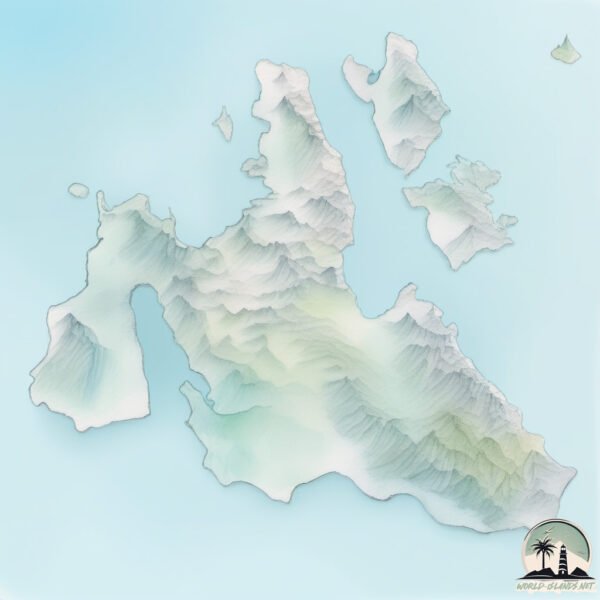Cephalonia

Welcome to Cephalonia, a Temperate island in the Ionian Sea, part of the majestic Atlantic Ocean. This guide offers a comprehensive overview of what makes Cephalonia unique – from its geography and climate to its population, infrastructure, and beyond. Dive into the details:
- Geography and Size: Explore the island’s size and location.
- Climate and Weather: Weather patterns and temperature.
- Topography and Nature: Uncover the natural wonders of the island.
- Infrastructure and Travelling: Insights on reaching, staying, and making the most of your visit.
- News and Headlines: Latest News.
Geography and size of Cephalonia
Size: 783.2 km²
Coastline: 268.7 km
Ocean: Atlantic Ocean
Sea: Ionian Sea
Continent: Europe
Cephalonia is a Large Island spanning 783 km² with a coastline of 269 km.
Archipel: Ionian Islands – A group of islands in the Ionian Sea, west of mainland Greece, known for their rich history, beautiful landscapes, and cultural heritage.
Tectonic Plate: Aegean Sea – Located in the eastern Mediterranean, this microplate is characterized by seismic and volcanic activity due to its interaction with the Eurasian and African Plates.
The geographic heart of the island is pinpointed at these coordinates:
Latitude: 38.22250799 / Longitude: 20.5749098
Climate and weather of Cephalonia
Climate Zone: Temperate
Climate Details: Hot-Summer Mediterranean Climate
Temperature: Hot Summer
Climate Characteristics: Characterized by hot, dry summers and mild, wet winters, typical of coastal areas with abundant sunshine.
Topography and nature of Cephalonia
Timezone: UTC+02:00
Timezone places: Europe/Mariehamn
Max. Elevation: 1628 m Ainos Oros
Mean Elevation: 353 m
Vegetation: Agricultural Mosaic
Tree Coverage: 26%
The mean elevation is 353 m. Dominating the island’s landscape, the majestic “Ainos Oros” rises as the highest peak, soaring to impressive heights. The island is characterized by Mountains: High, steeply elevated landforms. Characterized by both a high maximum elevation (over 500 meters) and a high mean elevation, creating rugged, mountainous terrains on islands.
Dominating Vegetation: Agricultural Mosaic
A mix of cropland and natural vegetation, often seen in rural landscapes where agricultural fields are interspersed with patches of natural habitats. Cephalonia has a tree cover of 26 %.
Vegetation: 15 vegetation zones – Exceptionally Diverse Island
Islands with more than ten vegetation zones are among the most ecologically rich and varied in the world. These islands are akin to miniature continents, boasting an incredible array of ecosystems. The sheer range of habitats, from high peaks to deep valleys, rainforests to deserts, creates a mosaic of life that is unparalleled. They are crucial for conservation and ecological studies.
Infrastructure and Travelling to Cephalonia
Does the island have a public airport? yes.
Cephalonia has a public and scheduled airport. The following airports are located on this island: Kefallinia Airport.
Does the island have a major port? yes.
Cephalonia is home to a major port. The following ports are situated on the island: ARGOSTOLION.
The mean population of Cephalonia is 45 per km². Cephalonia is Gently Populated. The island belongs to Greece.
The name of the island resonates across different cultures and languages. Here is how it is known around the world: Arabic: كيفالونيا; German: Kefalonia; Spanish: Cefalonia; French: Céphalonie; Portuguese: Cefalónia; Russian: Кефалиния; Chinese: 凯法利尼亚岛
Continuing your journey, Ithaca Island is the next notable island, situated merely km away.
Top 10 Things to Do, See & Eat in Kefalonia | Ultimate Travel Guide to Greece 🇬🇷



Greece is classified as Developed region: nonG7: Developed economies outside of the Group of Seven, characterized by high income and advanced economic structures. The level of income is High income: OECD.
News – Latest Updates and Headlines from Cephalonia
Stay informed with the most recent news and important headlines from Cephalonia. Here’s a roundup of the latest developments.
Please note: The data used here has been primarily extracted from satellite readings. Deviations from exact values may occur, particularly regarding the height of elevations and population density. Land area and coastline measurements refer to average values at mean high tide.
